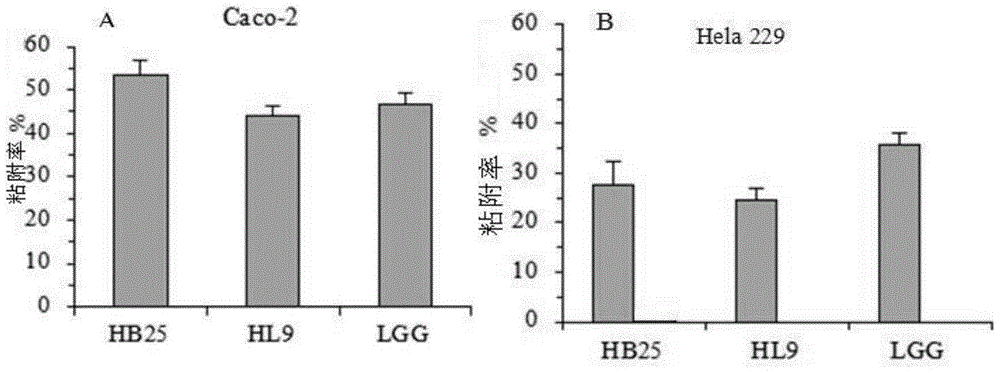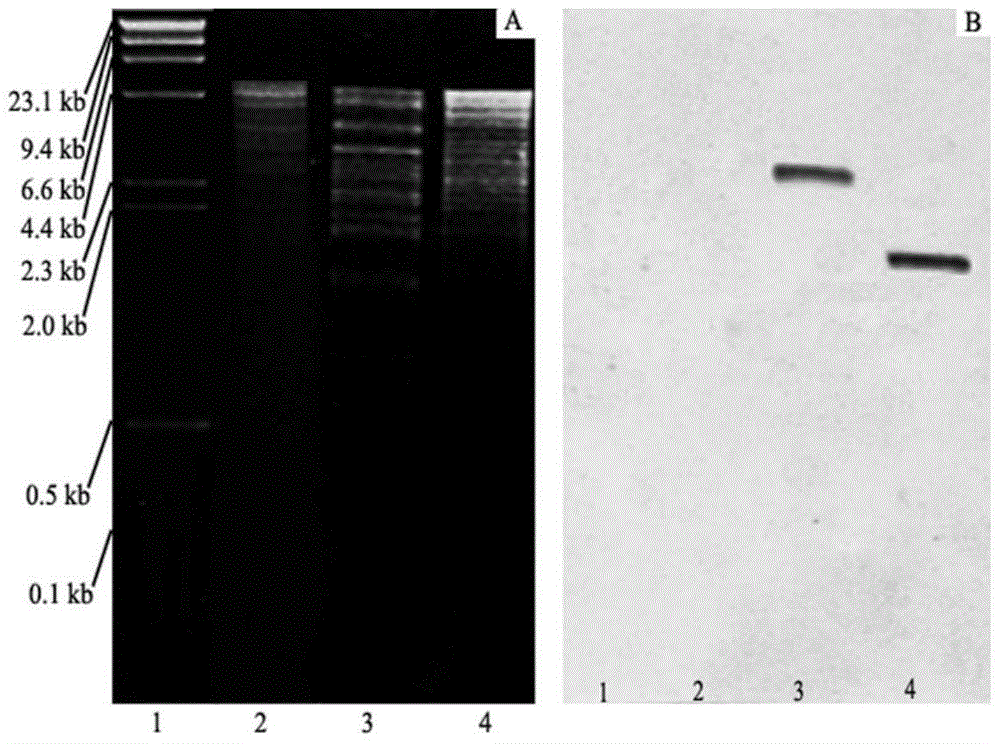Lactic acid bacteria having ampicillin resistance, and preparation and applications of preparation of lactic acid bacteria having ampicillin resistance
A technology of ampicillin and resistance, which is applied in the field of preparation and application of lactic acid bacteria and its preparations, and can solve problems such as the lack of systemic resistance genes of lactic acid bacteria
- Summary
- Abstract
- Description
- Claims
- Application Information
AI Technical Summary
Problems solved by technology
Method used
Image
Examples
Embodiment 1
[0049] Example 1 Preliminary Screening of Probiotics
[0050] The specific operation steps of strain isolation (including culture temperature, time, etc.) feature description)
[0051] 1. Culture medium:
[0052] Lactobacillus MRS separation solid medium: Accurately weigh 10.0g of beef extract peptone, 10.0g of tryptone, 5.0g of yeast extract, 5.0g of anhydrous sodium acetate (NaAc), 2.0g of triammonium citrate, K 2 HPO 4 2.0g, MgSO 4 ·7H 2 O0.58g, MnSO 4 ·H 2 O0.28g, glucose 15.0g, 1.0mL Tween-80 into the beaker, distilled water and stir evenly, add 15.0g agar and stir, after the drug is completely dissolved, add distilled water to 1000mL, monitor and adjust the pH of the medium to 6.2~ with a pH meter 6.4, sterilize with damp heat at 121°C for 15 minutes, and set aside.
[0053] Bifidobacterium improved MRS separation solid medium: accurately weigh 10.0g of beef extract peptone, 10.0g of tryptone, 5.0g of yeast extract, 15.0g of glucose, 5.0g of sodium acetate, 2.0g ...
Embodiment 2
[0090] The biological activity evaluation of embodiment 2 probiotics
[0091] The bacteria to be tested were Bifidobacterium longum HB25 and Lactobacillus acidophilus HL9 obtained in Example 1, and the control strain was Lactobacillus rhamnosus GG (LGG for short, ATCC53103). The bacterial strains frozen in the laboratory at -80°C were taken respectively and thawed in a water bath at 37°C. Take 100 μL of each bacteria in 100 mL of lactic acid bacteria MRS enrichment broth in a biological safety cabinet for activation and recovery. Shake the bacteria at 200rpm on an air-bath shaker at 37°C for 12h, centrifuge the bacteria solution at 4000rpm for 15min, remove the supernatant after centrifugation, wash the bacterial pellet with sterile saline for 3 times, and then transfer the bacterial pellet to the standard turbidimetric solution In the same test tube as the centrifuge tube, use sterile physiological saline to dilute to the concentration that needs to be higher than the standar...
Embodiment 3
[0128] 1. Analysis of strain plasmids
[0129] According to Wan Qian's method (Wan Qian, Cao Jian, Wu Xingquan, etc. Optimization of the extraction method of natural plasmids of lactic acid bacteria [J]. China Biotechnology Journal, 2010,30(2):94-99.) Carry out plasmid extraction, take Centrifuge 5-10 mL of the strain to be tested overnight, discard the supernatant, resuspend with 250 μL of solution P1 (add lysozyme, to a final concentration of 20 mg / mL), and bathe in water at 37°C for 30 minutes; add 250 μL of solution P2 and mix quickly, then add 350 μL Solution P3, mix well, centrifuge at 12000rpm for 10min; take the supernatant and add it to the spin column, centrifuge at 9000rpm for 1min, discard the liquid in the centrifuge tube; wash the spincolumn twice with 500μL WashBuffer, put the spincolumn into a new EP tube and centrifuge at 12000rpm for 2min , and then add 50 μL LutionBuffer (preheated at 60° C.), leave it for 2 minutes, centrifuge, and set aside. Detected by 1...
PUM
 Login to View More
Login to View More Abstract
Description
Claims
Application Information
 Login to View More
Login to View More - R&D
- Intellectual Property
- Life Sciences
- Materials
- Tech Scout
- Unparalleled Data Quality
- Higher Quality Content
- 60% Fewer Hallucinations
Browse by: Latest US Patents, China's latest patents, Technical Efficacy Thesaurus, Application Domain, Technology Topic, Popular Technical Reports.
© 2025 PatSnap. All rights reserved.Legal|Privacy policy|Modern Slavery Act Transparency Statement|Sitemap|About US| Contact US: help@patsnap.com



